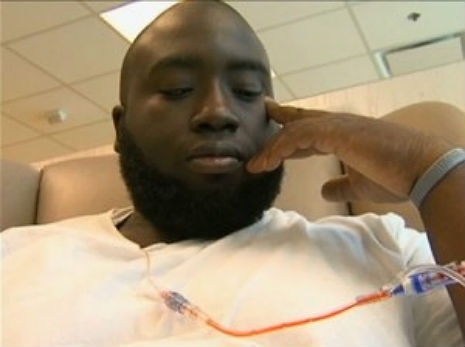
Artist’s rendering of the finished piece
The BBC reports that British light installation artist Bruce Munro is attempting perhaps the largest piece of breast cancer iconography ever created. His project, Beacon on the Hill, will be a “breast-shaped illumination,” 5m (16ft) by 3m (10ft), built on the dome of Long Knoll in Kilmington, in southern England. It will be made up of 2,730 illuminated plastic bottles and is intended as a tribute to breast cancer awareness.
While the idea of a giant glowing tit is kind of awesome, I’m skeptical of projects that tout “awareness” about breast cancer. Since this is in England, a developed nation with socialized health care, everyone who sees this is probably already “aware” of breast cancer. The cancer non-profit Munro is working with, Cancerkin, is focused on emotional support for patients and their families, but I’m not sure that a giant, disembodied shimmering boob would make any of the women I know feel much better about their chemo, mastectomies, or possibly impending deaths.
There is so much low-hanging (forgive the pun) aesthetic potential when it comes to breast cancer. Bumper stickers and t-shirts can cutely and benignly proclaim to “save the ta-tas,” and avoid conjuring images of sick and dying women (and men, who also get breast cancer).
This sort of boobs-not-women approach to breast cancer has been analyzed over and over, particularly by the patients themselves. When noted socialist feminist author Barbara Ehrenreich was diagnosed with breast cancer, she wrote in her book,
Bright-Sided: How Positive Thinking Is Undermining America:
“Something about the conjuncture of “breast,” signifying sexuality and nurturance, and that other word, suggesting the claws of a devouring crustacean, spooked almost everyone. Today however, it’s the biggest disease on the cultural map, bigger than AIDS, cystic fibrosis, or spinal injury, bigger even than those more prolific killers of women - heart disease, lung cancer, and stroke.”
But glowing arterial plaque, blackened lungs, or damaged brain tissue doesn’t look quite as pretty, does it? Munro seems more artist than activist, and that’s fine. His other work looks interesting, creating landscapes of luminescence that appear to have a lovely, strange, ethereal effect. When it comes to art that discusses disease though, I think “Untitled” (Portrait of Ross in L.A.) does a much better job of creating an emotional dialogue with the audience.
People like boobs, obviously—hey, boobs are great! But when we’re talking about a disease where your breasts can actually kill you, is it really particularly artistically insightful or helpful to disembody them, both literally and figuratively? Can’t we just let a giant glowing tit be a giant glowing tit?






